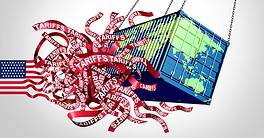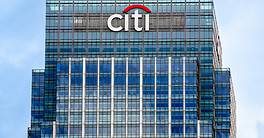Vanderbilt Law School Professor Yesha Yadav speaks to Global Finance about payments infrastructure in the US and reforming the system.

Global Finance: You say the US dollar payment system is falling behind other countries. Are we talking about a lag in technology or regulation, or both?
Yesha Yadav: Both. The pandemic sped up the move away from using cash and physical cards to contactless payments. But the underlying technology for moving money from one person’s account to another—that deeper layer on which payments are built—has not changed at all.
The real-time payment scheme for the American people lacks the underlying payment rails. It takes two or three business days for money to move from one person’s account to another. People still use checks all the time and 4.5% of US households do not have a bank account.
It’s policy neglect to not make payments a priority within the larger financial markets reform structure. Each state has its own regulations, and payment services providers must comply with this patchwork of laws. But on a larger level, policymakers have not invested deeply and meaningfully in saying, “We need to have a real-time payment scheme for the entire country where everyone can make really cheap payments to each other superfast and for free, in a way that brings folks into the economy that perhaps weren’t there before.”
The US is falling behind many other countries, including countries you wouldn’t expect. The US dollar payment system has really fallen behind on several measures, and that is creating economic costs for productivity and the capacity of the US dollar to act as strongly as it could as the world’s reserve currency.
GF: Give us an idea of other countries that are doing payments better.
Yadav: Brazil had huge problems doing electronic payments but in 2020 managed to get half its population on Pix [an instant payment platform created by the Bank of Brazil] over two years. Covid-19 stimulus payments were made on Pix. People in the street economy—people playing music on the street or asking for money—are using Pix for the first time and can integrate themselves into the formal economy.
UPI in India is the largest and most active digital payment scheme in the world today. In Thailand, PromptPay has really taken off throughout the economy, again targeting folks that were formerly outside of the economy and underbanked to join and make digital payments. For corporates, that’s a huge advantage because suddenly you have all these people that can make payments to you fast.
GF: How else do these schemes benefit corporates? Are US corporates disadvantaged?
Yadav: Studies show that electronic payments have several advantages for corporates. Businesses don’t have to store as much cash or transport it to and from their banks, which is expensive and requires security. Payments go faster when things are done electronically, so you can have more transactions over a shorter period than you would if folks just pay in cash. Business-to-business (B2B) settlement schemes in real time are next on the horizon; Singapore has a real-time B2B payment scheme. You can pay suppliers extremely quickly and receive money quickly to use for your own cash needs.
In the US, it takes two days or more to get a customer’s money into a business’s account. That’s a problem. We’re talking large sums of money stuck in the ether at the banks, which is not [earning] any interest and cannot be used.
GF: Is it in the interests of the banks to keep the US monetary system the way it is?
Yadav: The impetus to modernize just hasn’t existed. It’s a policy failure, to the extent that there’s no push to say, “You need to do this.” In the EU, the Single Euro Payments Area was born back in 2008 because it was a priority from a policy standpoint. There are ways to overcome these inefficiencies. The clearing house scheme in the US does settle money instantly, but because it costs money and not all the banks are plugged into it, it’s hardly used.
The US is trying to build a new piece of infrastructure, FedNow. The Federal Reserve is proposing a brand-new set of payments rails: real-time payments for the whole of the US. But it is bank-only, so you need a bank account to do it and we’re not clear whether people or businesses that use it must pay for it.
Most importantly, a ton of banks don’t want to join it because they don’t want to deal with verification issues or plugging in their systems, which might be costly. If you take a bank in deepest Nebraska, they’re like, “We don’t really care. We already have this two-to-three days system; we know how it works. We’re not transitioning to this scheme.” [But] if you band together, there is the ability and capacity to move money and settle it in real time, and it’s supercheap to the end user. Look at Faster Payments in the UK or Swish in Sweden.
GF: Are regulators unwilling to speed up change?
Yadav: There is caution, and for good reason because the US system is so systematically essential to the world economy—70% of global trade is in dollars, plus it’s the reserve currency. Realtime payment schemes run the very clear risk of fraud and irreversible errors. If you accidentally add an extra zero to your payment, it goes through instantaneously and the banks might not let you reverse it if it’s settled.
The risk of fraud is higher because banks don’t have time to check whether the payment is from a trusted source. Some security concerns have emerged in Brazil. Faster payment schemes are more prone to fraud, and banks must be willing to take the risk. You see this level of inertia where banks don’t want to take on the risks that come with speedier settlement of transactions.
GF: Can open banking address some of these challenges, and how is it progressing?
Yadav: Open banking is at the forefront of what is happening in banking innovation. It requires certain regulatory and trust mechanisms to be in place to allow banks to share information on customers, use software to verify their digital identity and for that data to be held securely in the cloud. Everyone can see the potential of open banking, but operationally it is slow to be forthcoming. In the US we have too many banks, so the coordination costs are much higher [than elsewhere].
Regulators themselves are not superfast in providing a framework, with respect to thinking through things like cybersecurity standards or API issues. It’s really lagging. It is talked about as an innovation but in the future tense.
GF: Can blockchain play a role in cutting through some of these obstacles?
Yadav: Several countries are experimenting with stablecoins, like Tether, which is used in parts of Asia to move money. These are payment rails run on public blockchains such as Ethereum, which can verify things like your public address and if you’re sending money to someone valid on the blockchain. It’s not going to allow for tracking to see if you’re compliant with know-your-customer laws.
Blockchains as they exist today enable these superfast and efficient stablecoin networks to exist. But the software currently running them doesn’t deal with some of the risks we consider important from a policy perspective, to deter things like money laundering or terrorist financing. We’re seeing the proof-ofconcept, but [as for] integrating that into real-world mechanics, we’re still getting to that next step.



